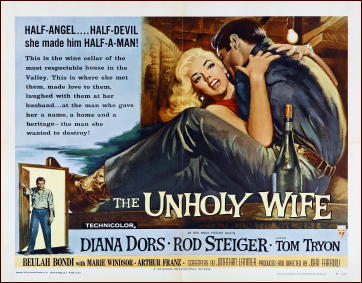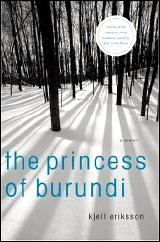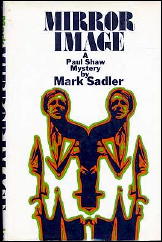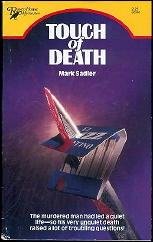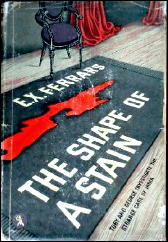November 2010
Monthly Archive
Thu 18 Nov 2010
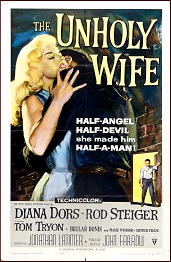
THE UNHOLY WIFE. RKO Radio Pictures, 1957. Diana Dors, Rod Steiger, Tom Tryon, Beulah Bondi, Marie Windsor, Arthur Franz, Joe De Santis. Screenplay: Jonathan Latimer, based on William Durkee’s play “The Prowlers,†telecast on the CBS series Climax! on 05 January 1956. Director: John Farrow.
It’s something of a muddled mess overall, but there is still a lot to like in this end-of-the-era film noir, and noir or not, it needed to be filmed in color, else Diana Dors’ beautifully coiffed mane of brilliant platinum blonde hair would have been as cruelly wasted as a crime against nature itself.
It begins, however, with Dors’ character, Phyllis Hochen, telling the story in what appears to be a dingy room of some type, possibly (and more than likely) a prison cell. Without makeup and with her hair perhaps her natural brown, it gives her a chance to display her acting ability, rather than her other more spectacular attributes. She is barely more than pretty in these scenes, but there’s an honesty about her that one does not notice when she’s playing bombshell, a role which in 1957 she was much well known for, by far.
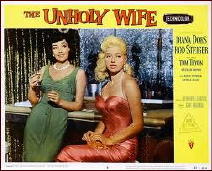
Accompanied by Gwen (Marie Windsor) as a barroom pickup artist, as she tells her story, Phyllis parlayed a small shot into picking up a husband, Paul Hochen (Rod Steiger), a very rich winegrower in northern California. This in spite of the fact that she has a young son and a husband lost in the war. Make that a double: she also warns him that she’s no good.
A warning he ought to have taken. Bored with life in an isolated mansion, it is not long before Phyllis has found a lover, a rodeo cowboy played by the ultra-handsome Tom Tryon. And it is not long after that that Phyllis shoots a prowler by “accident.†The only problem is, the dead man is not her husband, but her husband’s best friend.
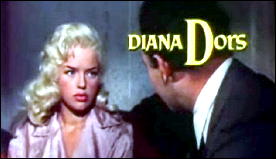
Thinking quickly on her feet, the blonde mane not concealing an empty brain, she convinces her husband to —, then she twists her story around in court so that —, and Paul’s ailing mother overhears —, and then, and then, and then the end.
Can you fill in the blanks? You’re going to have to, because I’m not telling. It’s believable enough, but it would be even more so if the characters weren’t quite so shallow – no, it’s not that they’re shallow. It’s more that we never get to know enough about them, only hints here and there. Some blatant, some hidden. The story shows us their actions. Their motivations are up for grabs.
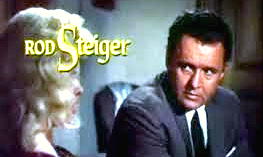
Some reviewers have taken what I took to be a straightforward story and twisted it up and down and inside out and coming up with another story altogether. I won’t tell you anything about that one, either. You’re better off making your own conclusions.
Or in other words, other commentators have been all over the place with this one, including Rod Steiger’s performance, understated in a way that’s not easy to put into words and yet totally dynamic — but as long as you’re asking me, I liked it just fine.
I do wish that Marie Windsor had had a longer part, though. Five minutes with Miss Windsor on the screen is not nearly enough.
Thu 18 Nov 2010
Posted by Steve under
Reviews1 Comment
CARTER BROWN – The Invisible Flamini. Signet T4854; paperback original; 1st printing, December 1971. Cover art by Robert McGinnis.
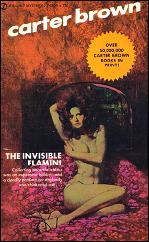
If you’re in Hollywood, and you’re in trouble, Rick Holman is the man to see. In his day he’s hushed up more secrets of important people in the movie business than people like Louella Parsons, in her day, could ever ever have imagined. And I’m sure that Louella knew more than she ever told.
Holman’s general investigative philosophy put into practice is one of laissez-faire. Even he admits it. By doing nothing he accomplishes more than half a dozen Lew Archers busily tearing up and down the California freeways.
And the women he meets! Male fantasies come to life, every one of them. Carter Brown is not a writer for anyone with an ounce of appreciation for the feminist movement. He creates a male chauvinistic dream world with a consummate perfection unmatched outside the pages of Penthouse and Playboy.
And, oh, yes. this one’s about a kidnapped Italian movie queen. If indeed it matters.
— Reprinted from The MYSTERY FANcier, Vol. 3, No. 5, Sept-Oct 1979 (slightly revised).
[UPDATE] 11-18-10. I suppose that if it does matter, and you’ll being asking for your money back if I don’t tell you more about the plot, I suppose I could read it again. I’d have to, since what you see above is all I remember. But I think it’s all you need to know. Previously assigned letter grade: C.
Thu 18 Nov 2010
REVIEWED BY GEOFF BRADLEY:
FATHER & SON. ITV1 (UK), June 7 through 10, July 2010. Dougray Scott, Sophie Okonedo, Ian Hart, Stephen Rea, Reece Noi, Wunmi Mosaku, Simon Delaney. Written by Frank Deasy. Director: Brian Kirk. (Previously shown on RTÉ (Ireland), 29 June through 20 July 2009.)

This was another of those stories spread over successive evenings that seem to be the vogue over here nowadays. This was in four parts — Monday to Thursday, one hour each, less adverts.
Set in Manchester, a city that has acquired a small reputation for gang violence, this concerns Michael Connor, a former criminal who has retired to a new life (and a new wife) after the murder of his first wife. He returns to Manchester when his estranged teenage son — who lives with his mother’s sister, a policewoman — is arrested and accused of shooting another teenager in a gang related killing.
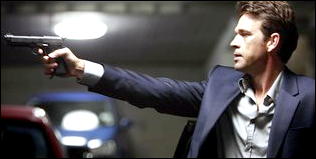
The story involves several strands with a prisoner and former colleague of the father keeping an eye on the son while attempting his own escape, and the involvement, possibly criminal, of the police both in Manchester and in Ireland.
There are some discrepancies and anomalies — would a fifteen year old, accused but not convicted of a shooting, be placed in a cell with a hardened adult criminal, and would a Manchester criminal, now living in Ireland, have an accent that ranges over most of the British Isles? — but the story twisted and turned and managed to hold my attention throughout
Thu 18 Nov 2010
REVIEWED BY WALTER ALBERT:
KJELL ERIKSSON – The Cruel Stars of the Night. St. Martin’s Press, hardcover, May 2007; trade paperback, April 2008. Translated from the Swedish by Ebba Segerberg.
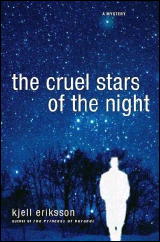
Inspector Ann Lindell and her team at the Violent Crimes Division of the Uppsala Police struggle through much of this novel in an attempt to make sense of the murders of several elderly men, looking for connections that would link the murders in some rational fashion.
In an initially apparently unrelated event, an elderly professor, the father of spinster Laura Hindersen, disappears. “He was a pain,” is the comment offered by a former colleague, and that rather general lack of interest and the absence of clues lead the investigator, Detective Sergeant Asa Lantz-Andersson, to conclude that she will have to wait for some unforeseen event that will resolve the stalled case.
The novel is, for much of its length, a meticulously plotted procedural. In the final pages, it’s the characters and not the plot that dictate the genre-bending conclusion, undoubtedly less reassuring than the conventional wrap-up but intellectually more challenging and disturbing.
And it’s that aspect of Eriksson’s artfulness that interests me and makes me eager to return to his work.
The Ann Lindell series —
1. The Princess of Burundi (2006)
2. The Cruel Stars of the Night (2007)
3. The Demon from Dakar (2008)
Wed 17 Nov 2010
REVIEWED BY JEFF MEYERSON:
MARK SADLER – Circle of Fire. Random House, 1973. Berkley, paperback, 1989.
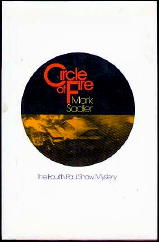
Mark Sadler is a pseudonym of the prolific Dennis Lynds, who also writes as Michael Colllins (about Dan Fortune) , William Arden, and John Crowe. As Sadler he writes about private eye Paul Shaw. Circle of Fire is the fourth in the series, a complex book that is readable without being outstanding.
Paul Shaw is called in to investigate when Dick Delaney, his California partner, is shot and seriously wounded while working on a case. Local politician Russell Dobson was blown up in a car with Lilian Marsak, whom he apparently had just picked up.
Shaw must determine whether the killer had a personal or political motive for getting Dobson out of the way, and eventually must decide if he was the intended victim after all.
What did Delaney find out that got him shot? The book is very complicated and somewhat confusing, and Shaw is a little slow in recognizing one of the major possibilities in the case. It’s competent enough, I guess, but it has all been done before, and better (including the author’s own Dan Fortune series).
One switch: for once the out-of-town investigator is not continually hassled by the local police.
— Reprinted from The MYSTERY FANcier, Vol. 1, No. 3, May 1977.
The Paul Shaw series —
The Falling Man. Random House, 1970.
Here to Die. Random House, 1971.
Mirror Image. Random House, 1972.
Circle of Fire. Random House, 1973.
Touch of Death. Raven House, 1981.
Deadly Innocents. Walker, 1986.
Wed 17 Nov 2010
REVIEWED BY CURT J. EVANS:
ELIZABETH FERRARS – Give a Corpse a Bad Name. Hodder & Stoughton, UK, hardcover, 1940. Collins Crime Club, UK, hc, 1981. Chivers, UK, large print edn, 2000. No US edition.
Like Christianna Brand, the prolific, long-lived mystery doyenne Elizabeth Ferrars (1907-1995) slipped into print at the tail end of the Golden Age of British mystery (roughly 1920 to 1940); and, like Brand, upon her appearance in the detection field, she was raved as part of the “literary” school of British women mystery writers following Crime Queen’s Dorothy L. Sayers’ injunction to transmute detective novels into novels of manners with a crime interest.
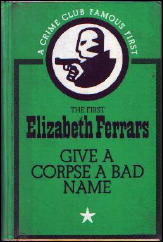
Ferrars went so far as to use a Lord Peterish, Campionite series detective in her first five books, one Toby Dyke, who comes complete with a Bunterish, Luggite assistant, one George (no last name — George is wary about giving out personal details). Though Toby is no aristocrat, he is an winning gent; and George seems to have picked up quite a bit of knowledge of crime and criminals at some point in his life.
I have read three of the later four titles in the series and thought the last, Neck in a Noose, the best, with the other two getting bogged down in messy plots. Give a Corpse a Bad Name, however, struck me as very good, with a particularly ingenious, twisting finish.
In the English village of Chovey, the charming, youngish widow Anna Milne (formerly of South Africa but now residing at one of Chovey’s most desirable residences, “The Laurels”), reports to the police that she has run down and killed a man. Oddly, the dead man also comes from South Africa and has Anna Milne’s address in his pocket, yet Anna Milne claims not to recognize him.
Since the man had been drinking heavily before the fatal accident and she herself had not, no legal culpability is attached to Mrs. Milne. But then anonymous letters begin appearing, suggesting that this “accident” was no accident….
Soon former crime reporter Toby Dyke and his mysterious yet amiable friend George are investigating, with surprising results. And George proves no slouch himself as an “amateur” detective in the end.
Give a Corpse a Bad Name is an enjoyable book, with sufficient, sometimes strong, characterization, good writing and an interesting puzzle with some coherent cluing. Toby and George remain more nebulous than Peter and Bunter and Campion and Lugg, yet they do have some nice moments, such as George’s lecture to Tony on the merits of barley sugar.
Definitely worth reading, though the original edition, printed only in Britain by Hodder and Stoughton, is very rare and very expensive. Fortunately it was reprinted in hardcover by Collins in 1981 and also a new press, Langtail, appears to have reprinted it in paperback just this year.
Some Brief Bio-Bibliographic Bits:
The Toby Dyke mysteries: [Taken from the Revised Crime Fiction IV, by Allen J. Hubin.]
Give a Corpse a Bad Name (n.) Hodder 1940.
Remove the Bodies (n.) Hodder 1940. Doubleday, 1941, as Rehearsals for Murder.
Death in Botanist’s Bay (n.) Hodder 1941. Doubleday, 1941, as Murder of a Suicide.
Don’t Monkey with Murder (n.) Hodder 1942. Doubleday, 1942, as The Shape of a Stain.
Your Neck in a Noose (n.) Hodder 1942. Doubleday, 1943, as Neck in a Noose.
Note: Both Elizabeth Ferrars and E. X. Ferrars, her byline in the US, were pen names of Morna Doris Brown, 1907-1995. A long obituary for her by Jack Adrian can be found online.
Editorial Comment: I have found no website for Langtail Press, but there is a list of their forthcoming mysteries, all softcover reprints, on Amazon UK, with almost 50 titles scheduled for release on December 1st. The books are uniformly priced at 12 pounds; other authors include Anthony Berkeley, Freeman Wills Crofts, Fredric Brown, Gavin Black and John Dickson Carr.
Tue 16 Nov 2010
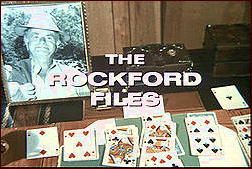
“Sleight of Hand.” An episode of The Rockford Files (Season 1, Episode 15). First air date: 17 January 1975. James Garner, Noah Beery, Joe Santos, Tom Atkins, Lara Parker, Pat Delany, Allan Miller. Teleplay by Stephen J. Cannell & Jo Swerling Jr., based on the novel Thin Air by Howard Browne.
Stop me if you’ve heard (or seen) this one before.
Private eye Jim Rockford is coming back to LA after a vacation trip with Karen Mills, his current girl friend, a vivacious young divorcee with a three year old daughter. He stops at her house, she leaves to open the front door, he carries the girl up to her bedroom and tucks her in, and goes downstairs to find Karen’s open purse on a counter — and no Karen. He was only a few feet behind her when he went in — and she has disappeared.
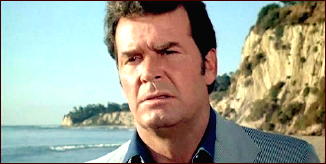
When the police are called (Joe Santos as Sgt. Becker), they find the body of Karen’s next door neighbor lying on the ground next to her house. Do the police (Tom Atkins as Lt. Diel) believe Rockford’s story? Well, what do you think? (Would you believe such a story?)
Or in other words, Rockford’s on his own in solving this one, except for his dad, Rocky, who catches the one clue Rockford misses.
The novel has been reviewed earlier on this blog, and from Gloria Maxwell’s description, the story line of the TV show is almost exactly the same, at least the beginning. While I’ve read the book, I couldn’t tell you now if the ending is the same, nor how closely they followed the plot when the story was used again as the basis for an episode of Simon & Simon in 1982.

I have to tell you, though, as entertaining as the story is on this mid-season episode of The Rockford Files, if you allow yourself the time to think it about carefully, and maybe only casually and not even that carefully, the whole thing is adroitly administered hogwash, a heap of impossibilities disguised as a stack of highly unlikelies.
It may be that 50 minutes or so just isn’t enough running time to make the parts fit together so they make sense, but in all honesty, they don’t.
But did I say that this was one of the most entertaining episodes so far this first season? I did and I didn’t, but it was. It also comes the closest to true noir, albeit in a slightly ham-fisted way. As private eye Jim Rockford, James Garner lets his feelings show more than usual on this one.
Tue 16 Nov 2010
A 1001 MIDNIGHTS Review
by Bill Pronzini & Marcia Muller:
H. C. BAILEY – Mr. Fortune Objects. Victor Gollancz, UK, hardcover, 1935. Doubleday Crime Club, US, hardcover, 1935.
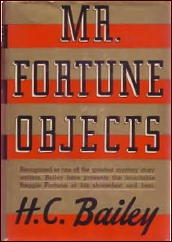
One of the most popular of British Golden Age sleuths is H. C. Bailey’s Reginald Fortune. Reggie is a doctor whose deductive abilities and refusal to take the facts at face value make him an invaluable asset to Scotland Yard’s CID, and he is often called in as scientific adviser on particularly difficult cases.
Fortune, whose plump appearance and fondness for gourmet foods belie his dogged devotion to the pursuit of justice, appears in ten novels and fourteen short story collections.
Mr. Fortune Objects contains six stories (aptly termed “objections” because Reggie persists in taking exception to the obvious solution to each of the cases presented to him).
In “The Broken Toad,” he investigates the mysterious poisoning of suburban Police Constable Mills, the circumstances of which are “rare and bafflin’ ” and the solution to which is sure to surprise the reader.
“The Three Bears” takes us into the art world, exposing its hypocrisies and affectations, as well as its murderous passions. And in “The Yellow Slugs,” Fortune probes into the reasons a young boy attempted to drown his sister, reasons that he thinks are not as simple as the boy claims.
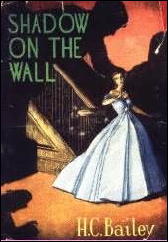
“The Little Finger” deals with arson, jewel theft, bloodstains, and a missing digit. “The Angel’s Eye” is an entertaining house-party mystery. And “The Long Dinner” concerns a missing painter and a menu that makes gourmand Reggie’s mouth water.
Fortune, his boss Lomas, Superintendent Bell, and Inspector Underwood have delighted readers for years. The Reggie Fortune stories are soundly plotted and their logic is impeccable. One might complain of the weak development of secondary characters and somewhat pretentious dialogue, but all in all these remain good light reading.
The better of the Reggie Fortune novels are Shadow on the Wall (1934), The Bishop’s Crime (1941), and The Life Sentence (1946). Particularly good among the short-story collections are Mr. Fortune Explains (1931) and The Best of Mr. Fortune (1943).
Bailey’s other series character, lawyer Joshua Clunk, “a champion of the weak and oppressed,” is considerably less interesting-perhaps because he appears only in novels and Bailey was a much better writer of short stories than a novelist.
The ten Clunk books — among them The Red Castle Mystery (1932), Nobody’s Vineyard (aka Dead Man’s Shoes, 1942), The Wrong Man (1945) — are well plotted but are written in a much more turgid style than the Reggie Fortune series.

Anyone who can wade through an entire novel bulging with such passages as the following from Nobody’ s Vineyard is a truly dedicated mystery reader:
That would be a mad humility, and you’re neither humble nor mad. Amen. So be it. Praise God for all. Why then, what is it that you fly from? The job and the job masters. Even as I. You from His Highness the Town Clerk and the Circumlocution Office and the Mayor and Aldermen and Councillors. I from a misbegotten Editor, poorfish, and the slavery of cooking stories of tripe and the plague of fools who want to be in them or kept out of them.
———
Reprinted with permission from 1001 Midnights, edited by Bill Pronzini & Marcia Muller and published by The Battered Silicon Dispatch Box, 2007. Copyright © 1986, 2007 by the Pronzini-Muller Family Trust.
Previously on this blog: Combined earlier into one post, Curt Evans reviewed both Mr. Fortune Objects and Clue for Mr. Fortune.
Tue 16 Nov 2010
Posted by Steve under
ReviewsNo Comments
IT IS PURELY MY OPINION
Reviews by L. J. Roberts
ALYS CLARE – Whiter Than the Lily. Hodder & Stoughton, UK, hardcover, November 2004; paperback, August 2005.
Genre: Historical mystery. Leading characters: Josse d’Acquin/Abbess Helewise; 7th in series. Setting: England, 1190s.
First Sentence: The walled garden lay as if stunned under the hot May sunshine.
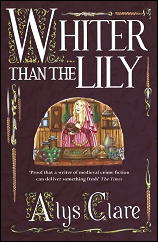
Sir Josse d’Acquin. a knight in the era of King Richard I, is taken to the Isle of Oxney where he meets an older man and his young wife who despair of having a child. When asked, Josse supports their idea of the wife traveling to The Abbey of Hawkenlye where Josse’s friend, Abbess Helewise, and her nuns might help the young wife.
Once there, the woman keep refuses examination and keeps herself sequestered. The husband arrives later, much addled and unwell. But for Josse, who comes to the Abbey, something doesn’t add up, particularly when the woman dies and is found to have been pregnant.
Vivid descriptions are a hallmark of Ms. Clare’s writing whether it is of the area in spring, thunderstorms, or of dreams. That, along with a lovely, gentle humor to the author’s voice and a touch of the paranormal to the story, although much less than in some of the previous books, are some of the reasons why I so enjoyed this book.
English history is an interest of mine. Ms. Clare goes beyond providing interesting information and facts. She views those facts in terms of their impact on the lives of the people such as the strain on people to raise money for King Richard’s ransom…
“Although Helewise understood why such an expensive campaign had been necessary, a port of her could not help wondering whether knights, lords and kings with the passion and the thrill of holy war filling their heads ought to pause just for a moment to wonder if it was all worth it.â€
As always, I read for interesting, realistic characters. I love that, in spite of being Abbess, Helewise had a full life prior to becoming Abbess. I appreciate Josse’s uncertainties and frustration at the realization of how little he knows and how few facts he has in trying to learn what happened.
However, it’s the relationship between Helewise and Josse; one of friendship, respect and support but with the affection always contained, that is the central focus of the stories.
I thoroughly enjoyed this book and am pleased I’ve many more books ahead of me. I do recommend the series and suggest reading it in order.
Rating: Good Plus.
Editorial Comment: There are 12 books in this “Hawkenlye” series, with the most recent appearing in 2008. LJ reviewed Girl in a Red Tunic, the eighth in the series, here, earlier on this blog. The titles of the books come from Carmina Burana, the lyrics of which were written by a 12th century monk.
Mon 15 Nov 2010
Reviewed by DAVID L. VINEYARD:
“Night of the Gun.” An episode of Tightrope! (Season 1, Episode 17). First air date: 29 December 1959. Mike Connors as Nick Stone. Guests: Mike Kellin, Whit Bissell, Barbara English, Paul Langdon. Teleplay by Frederic Brady. Directed by Paul Wendkos.
Policeman Paul Langdon explaining why a detective roughed up undercover cop Nick Stone (Michael Connors):
“The sergeant is a good officer, he just didn’t know you.”
Nick Stone: “Yeah, like everyone else.”
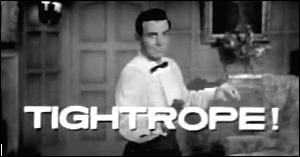
Tightrope! ran for a single season in the 1959-1960 television season for 37 episodes and featured the adventures of undercover cop Nick Stone, as played by Michael Connors. Stone was a cross between Peter Gunn and James Bond, plying the mean streets in first person-narrated tales of crime, murder, betrayal, about a man on the tightrope as a undercover policeman.
Created by Clarence Greene and Russell Rouse, Tightrope was a fast paced half hour show that moved like the bullets that frequently flew from Connors’ gun. A typical episode featured beautiful sexy women, bizarre villains, twisty plots, and enough violence for three other series.
Opening each week with Connor’s patented fast draw, the series had only one continuing character, Stone, and found him each week in a new city with a new assignment.
“Night of the Gun” is perhaps the best of the series, a tough and dark little tale that finds Nick helping the local police to find a witness on the run (Whit Bissell). Also hunting for Bissell is Larry Maddox (Mike Kellin), a club owner who sidelines as a killer for hire.
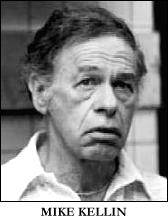
It’s Kellin and his performance as Maddox that raises this above the rest. Maddox is an effeminate sadist, one part hipster, one part Liberace, who lives for trouble and pain: “Beautiful, beautiful.”
Nick knows the best way to find Bissell is to follow Maddox to him, so he attracts his attention, then befriends the bizarre hood who sees a kindred spirit in Connors. For a show from 1959 the homo-erotic content of these scenes is pretty obvious, and though a couple of pretty girls are thrown into the mix, it’s clear that Kellin’s bizarre hit man isn’t interested in them all that much.
I was reminded a bit of Lee Marvin and Earl Holliman’s homo-erotic hoods from Joseph L. Lewis The Big Combo and George Sanders as the strange forger and thief from John Larkin’s Quiet Please, Murder!, but Kellin’s character is even more outlandish.
The opening scene where he kills a frightened and desperate witness is as sadistic a display as you ever saw on the small screen.
This kind of show lived or died on the shoulders of the hero, and here Connors, in his first series, shines. Nick Stone is tough and smart, but he is also haunted by his job. He’s not always sure that there is a purpose to what he does, and longs for the comradeship of his fellow officers, a good woman, and a nine-to-five life, even as he wears expensive clothes and hangs out in the fanciest nightclubs. Each show features at least one scene of Nick alone in a crowd on a busy neon-lit street in a large city, alone even among the throng.
As Connors gets closer to Kellin we begin to see just how crazy his Larry Maddox is, and it is a great bizarre performance, a mix of beatnik and hood, flamboyant and equal parts sadist and masochist.
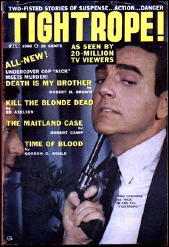
Finally when they go to meet Whit Bissell — who thinks Maddox is helping him to get out of town — Maddox figures out Connors as Nick is a cop and gets the drop on him, but didn’t figure on that patented fast draw.
“Beautiful, beautiful. Just like pulling a rabbit out of a hat. Beautiful …”
Connors went on to fame and fortune as Mannix, and Kellin had a long career as a character actor, including right after this a turn as the Chief Mate on The Wackiest Ship in the Army.
Whit Bissell was in a little bit of everything from his role as the General in The Time Tunnel to his essay as the mad doctor in I Was a Teenage Frankenstein ( “I know you have a civil tongue in your head, I put it there!”).
An attempt to revive the character of Nick Stone and series with Christopher George was a failure, but Stephen Cannell’s legendary Wiseguy with Ken Wahl owed a lot to this.
Tightrope! isn’t available on DVD, but a few episodes are around, and well worth catching even if they are in less than pristine condition. It was a smart well written and directed series mindful of Dashiell Hammett and Alex Raymond’s early Secret Agent X-9 with its lone hero living a lonely and dangerous life without friends or allies.
Tightrope! was a solid entertaining cop series with a bit more meat on the bone than usual. If you have never seen any of these you are in for a treat, and if you recall them but haven’t seen them for a long time you will be surprised just how good they were.
« Previous Page — Next Page »




